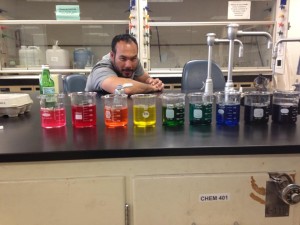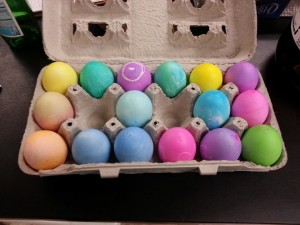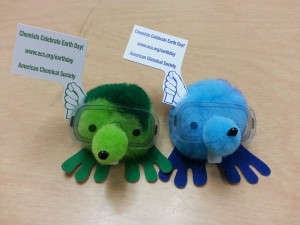On Friday, March 20, Chem Club got together to celebrate spring and Easter by dyeing eggs. The wonderful rainbow of dyes served its double duty for the chem club members by giving them some insight into the chemistry of dyes as well as giving brilliant colors to the eggs.
Egg dyeing is usually done with food coloring and vinegar: in this case, Chem club used egg dye that came in little tablets that were used to dissolve in the vinegar, then diluted with water. Dyes are negatively charged, so by using vinegar to protonate the surface of the shell, the dyes can bind to it.
Vinegar also reacts with the egg shell itself, dissolving the calcium carbonate, as shown by the well-known egg and vinegar experiment. Dissolving parts of the shell create more surface area for the dye to grab onto, resulting in a more vibrantly colored egg. To make patterns, wax (we used white crayons and candles) is used to draw on the egg before dyeing. The wax prevents the food coloring and the vinegar from getting to that part of the shell, resulting in a white pattern emerging from the color.
The chem club ended the activity by putting a few of the eggs into vinegar to soak over the weekend to dissolve the shells.
Plans in SCC Chem Club’s future include having a booth in the quad during SCC’s Earth Day. They will be giving out ACS Earth Day moles. They will also have a variety of informational activities including “Chemists Celebrate Earth Day” booklets.



